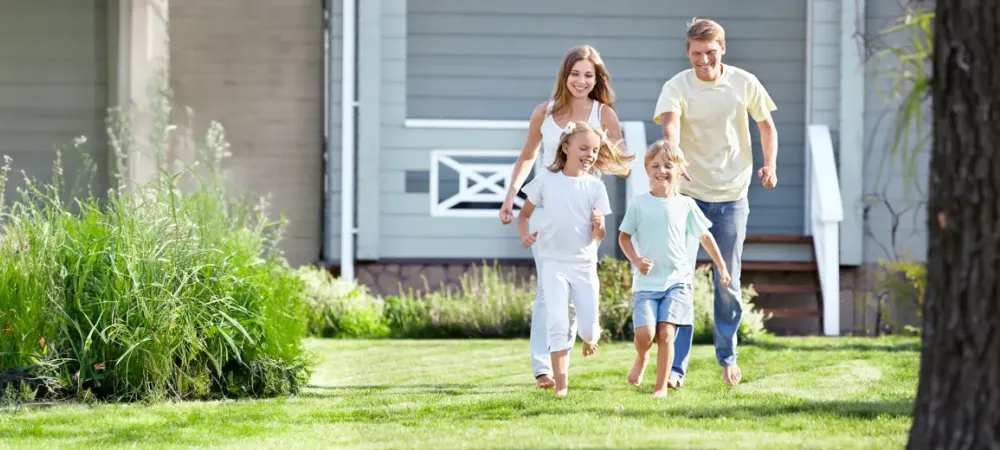Why Autumn is Prime Time for Alabama Lawn Aeration

As the scorching Alabama summer heat begins to wane and the crisp autumn air settles in, homeowners across the Yellowhammer State have a golden opportunity to revitalize their lawns. Fall lawn aeration is a crucial yet often overlooked practice that can transform your grass from lackluster to lush. In this blog, we'll explore why fall is the perfect time for lawn aeration in Alabama, the numerous benefits it offers, and the various methods available to achieve a healthier, more vibrant lawn.
Alabama's climate is characterized by hot, humid summers and mild winters, with the fall season offering a sweet spot for lawn care. Here's why autumn is ideal for aerating your Alabama lawn:
1. Optimal Growing Conditions: Fall temperatures in Alabama are perfect for cool-season grass growth and recovery. The soil is still warm from summer, promoting root growth, while the cooler air temperatures reduce stress on the grass.
2. Reduced Weed Competition: Many summer weeds are dying off, giving your grass less competition for nutrients and water after aeration.
3. Preparation for Winter: Aeration in fall helps your lawn build strength before the mild Alabama winter, ensuring a quicker green-up in spring.
4. Moisture Levels: Fall in Alabama often brings more consistent rainfall, providing natural irrigation for your newly aerated lawn.
The Benefits of Lawn Aeration
Aeration is like giving your lawn a breath of fresh air. Here are the key benefits:
1. Improved Soil Structure
Aeration breaks up compacted soil, allowing air, water, and nutrients to penetrate deeper into the root zone. This is especially beneficial for Alabama's clay-heavy soils, which tend to become compacted easily.
2. Enhanced Root Growth
By creating pathways in the soil, aeration encourages roots to grow deeper and stronger. Deep roots mean a more drought-resistant lawn – a significant advantage during Alabama's occasional dry spells.
3. Better Nutrient Absorption
Aerated lawns can more efficiently absorb fertilizers, water, and oxygen. This means you'll get more bang for your buck when applying fall fertilizers, setting your lawn up for success in the coming year.
4. Thatch Reduction
While thatch (a layer of dead grass between the soil and living grass) can be beneficial in small amounts, excessive thatch can harbor pests and diseases. Aeration helps break down thatch, promoting a healthier lawn ecosystem.
5. Increased Resilience
A well-aerated lawn is better equipped to handle Alabama's weather extremes, from summer heat waves to winter frost. It's also more resistant to pest infestations and diseases common in the Southeast.
6. Water Conservation
Aeration improves water penetration and retention in the soil. This means less runoff and more efficient use of water – an important consideration for environmentally conscious Alabama homeowners.
Aeration Methods: Choosing the Right Technique
There are several methods of lawn aeration, each with its own advantages. Understanding these methods can help you choose the best option for your Alabama lawn:
1. Core Aeration: Core aeration, including hydraulic core aeration, is a highly effective method that removes small plugs of soil from the lawn.
Benefits:
- Deep soil penetration (2-3 inches), ideal for Alabama's clay-rich soils
- Creates space for new soil amendments and fertilizers
- Promotes robust root growth
- Effective for both cool-season and warm-season grasses common in Alabama
2. Spike Aeration: This method involves creating holes in the soil with solid tines.
Benefits:
- Less disruptive to the lawn surface
- Can be useful for light, sandy soils
- Suitable for small areas or spot treatments
3. Liquid Aeration: A newer method that uses liquid solutions to improve soil structure.
Benefits:
- Convenient application
- Can reach areas difficult for mechanical aerators
- Minimal surface disruption
4. Manual Aeration: Using hand tools for aeration in small areas or for spot treatments.
Benefits:
- Allows for precision in problem areas
- No need for large equipment
- Ideal for small lawns or gardens
Among these methods, core aeration, particularly hydraulic core aeration, often stands out for its effectiveness in Alabama's soil conditions. The ability to remove actual soil cores and create deeper pathways for air, water, and nutrients makes it especially beneficial for the dense, clay-heavy soils common in many parts of the state.
Making the Most of Fall Aeration
To maximize the benefits of fall aeration in Alabama:
1. Time it Right: Aim for late September to early November, when temperatures have cooled but grass is still actively growing.
2. Prepare Your Lawn: Mow your lawn slightly shorter than usual and ensure the soil is moist but not waterlogged before aerating.
3. Follow Up with Overseeding: Fall is the perfect time to overseed cool-season grasses in Alabama. The aeration holes provide ideal seed-to-soil contact.
4. Apply Fertilizer: Take advantage of the open soil to apply a balanced organic fall fertilizer, promoting strong root growth before winter.
5. Water Appropriately: Keep the soil moist after aeration to support recovery and seed germination if overseeding.
Fall lawn aeration is a powerful tool in the Alabama homeowner's lawn care arsenal. By choosing the right method and timing it properly, you can set your lawn up for success not just for the upcoming spring, but for years to come. As you enjoy Alabama's mild winter, you'll rest easy knowing that beneath the surface, your lawn is developing the strong, deep root system that will be the foundation of a lush, green yard come springtime. So this fall, give your lawn the gift of aeration – your grass (and your neighbors) will thank you!
